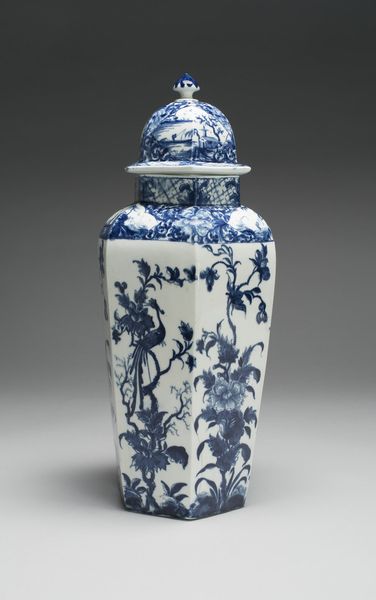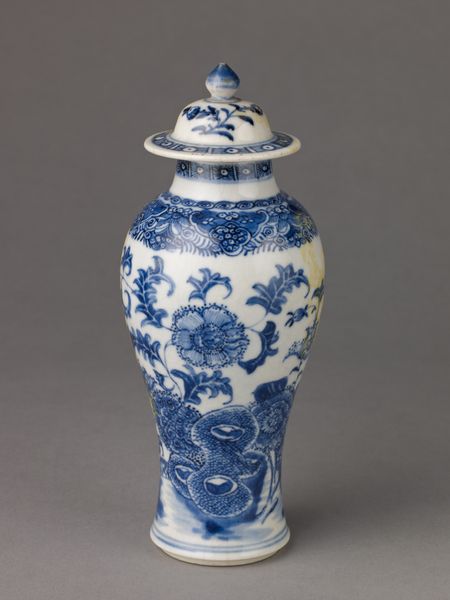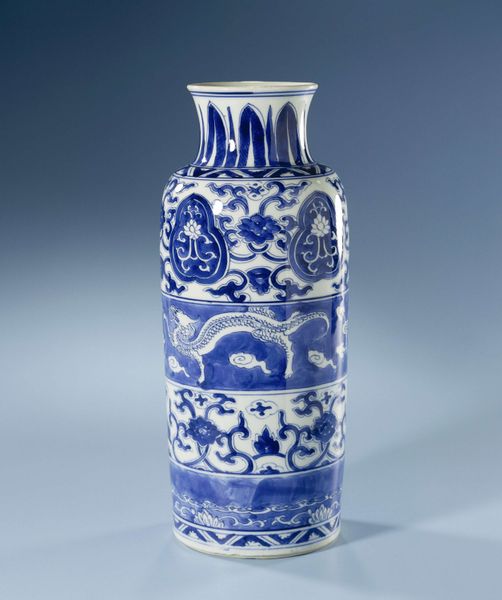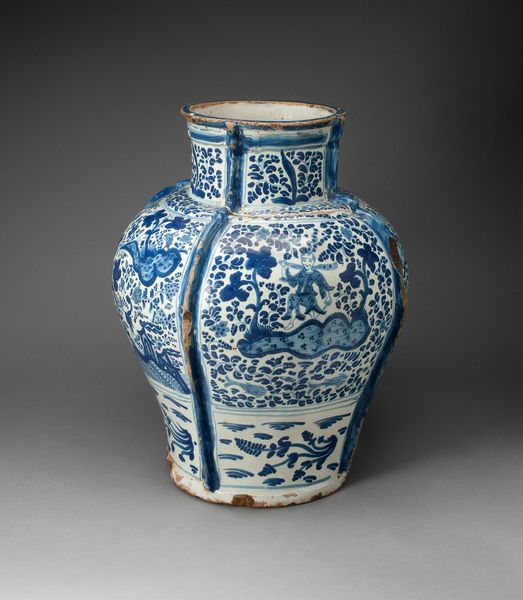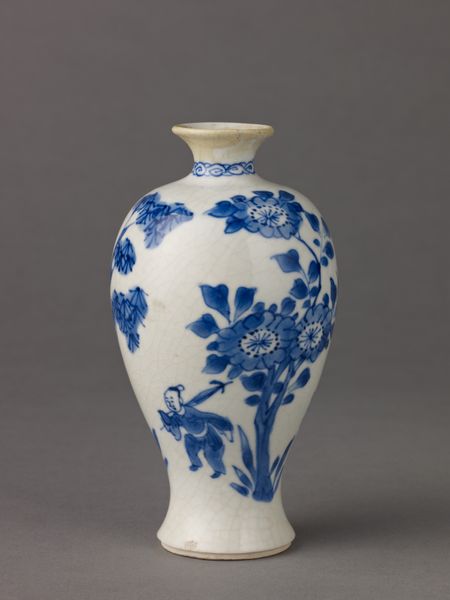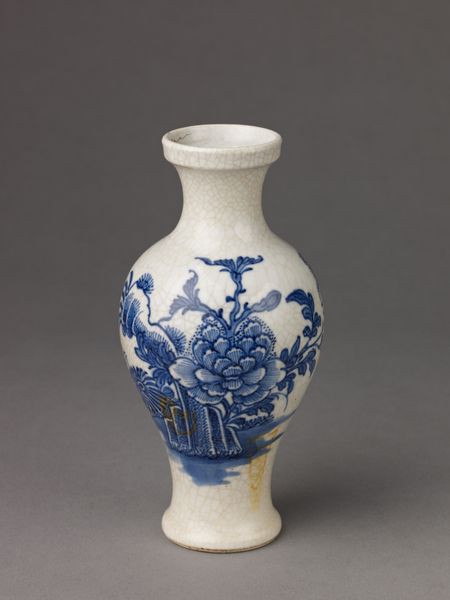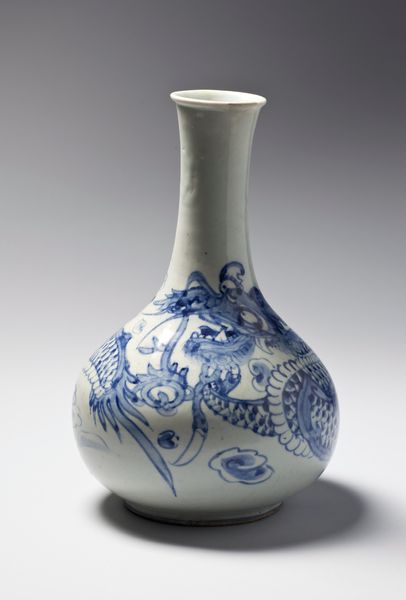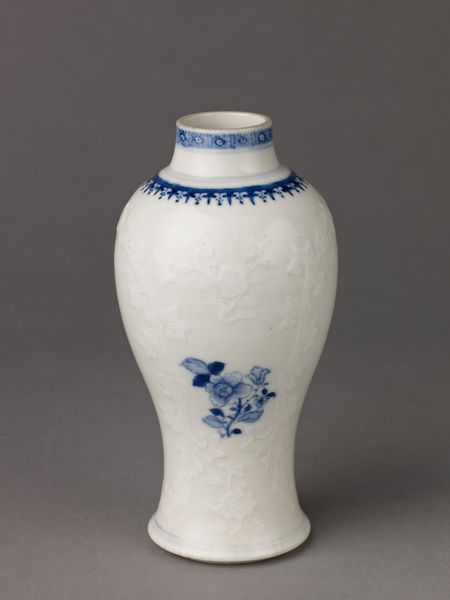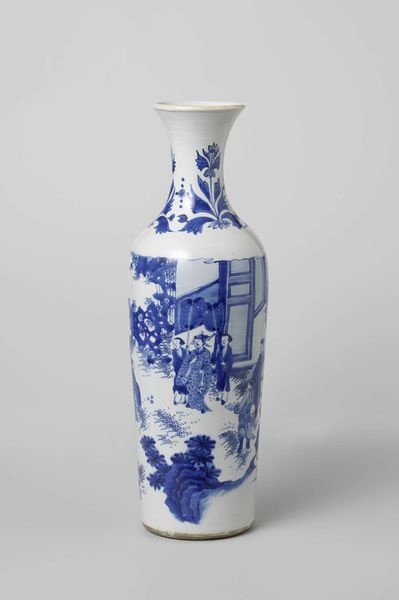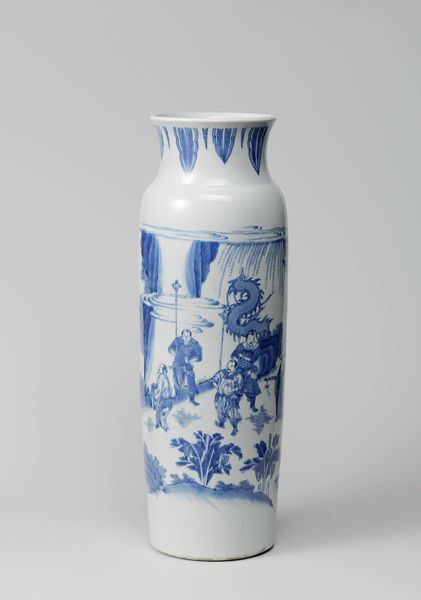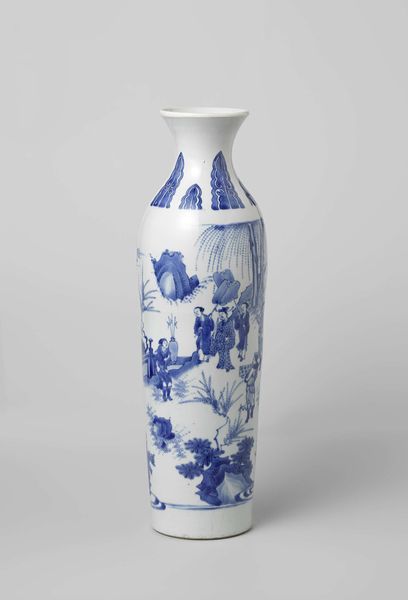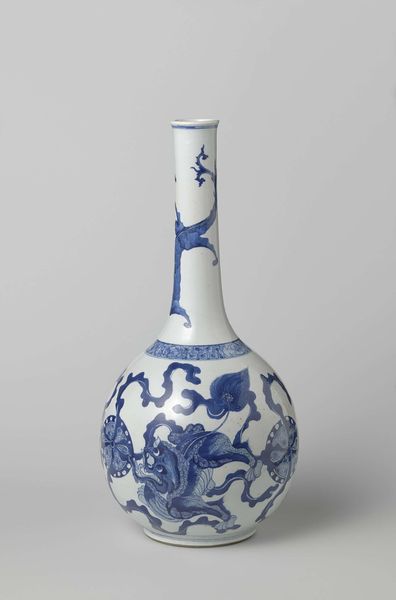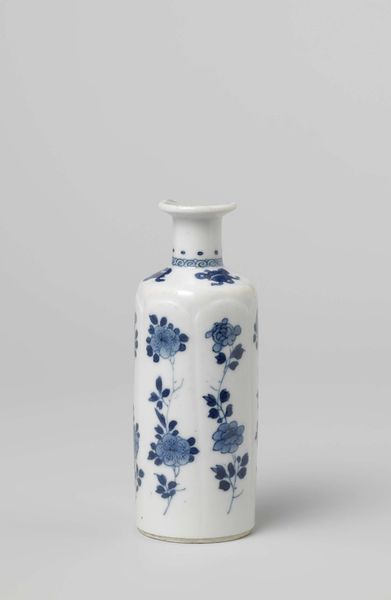
Vase with Cover (one of a pair) c. 1760
0:00
0:00
ceramic, porcelain
#
ceramic
#
vase
#
porcelain
#
figuration
#
orientalism
#
ceramic
#
decorative-art
#
rococo
Dimensions: 38.1 × 17.5 cm (15 × 6 7/8 in.)
Copyright: Public Domain
Editor: This elegant porcelain vase with cover, crafted around 1760 by the Worcester Royal Porcelain Company, features a beautiful blue and white figuration. The scenes depicted remind me of traditional Chinese porcelain, though something about the overall form feels distinctly European. How might we interpret this combination of styles? Curator: Well, you've already identified one key aspect – its connection to "orientalism," a phenomenon where European artists and manufacturers were deeply influenced by Asian aesthetics. These vases weren't simply decorative; they actively participated in a complex cultural exchange. Editor: A cultural exchange... so, it wasn't just about mimicking Asian art? Curator: Precisely. During the 18th century, Chinese porcelain was highly prized in Europe, representing sophistication and wealth. The Worcester Royal Porcelain Company and others tapped into this desire, producing their own versions. However, they weren't creating perfect replicas. The Rococo style, with its love for asymmetry and elaborate detail, is clearly visible in the overall shape and the whimsical nature of the painted scenes. Editor: So, they adapted Chinese motifs to suit European tastes and appeal to the European market? Curator: Exactly! This vase becomes a statement of status and worldliness. Owning such objects demonstrated not just wealth, but also an understanding and appreciation – albeit a European understanding – of different cultures. Did this appreciation involve genuine respect, or something closer to cultural appropriation? That's a question art historians continually debate when looking at pieces like this. Editor: That's a great point! I never really thought about the ethics behind imitating styles from different cultures. Curator: The beauty of an object like this resides in the discussions and questions that it can trigger. Thinking about social status, trade, and the circulation of ideas makes the art of the past ever relevant for us today.
Comments
No comments
Be the first to comment and join the conversation on the ultimate creative platform.
